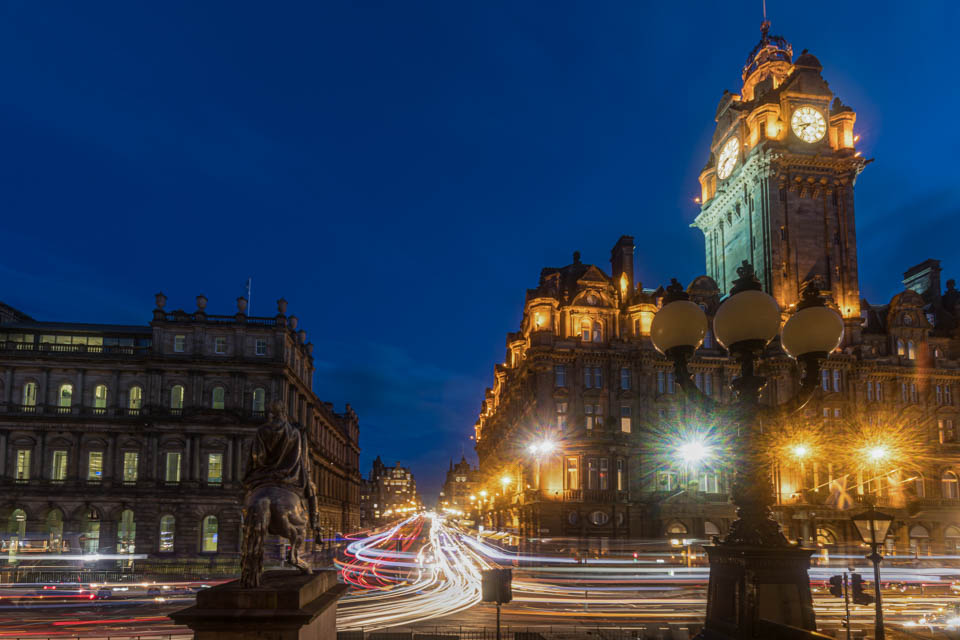October 2, 2019
Long Exposure Noise Reduction – what is it?
Does your camera take a while to process after taking a long exposure? That’s Long Exposure Noise Reduction. What is it and do you need it?

We’ve kicked off the Night Photography workshops again. During the session, we use the varying types of light available after sunset. Invariably this means that we need to use exposures well over a second and often up to 30 seconds. Quite often, I’ll notice clients sitting twiddling their thumbs, waiting for their camera to process. The reason for this is Long Exposure Noise Reduction.
What is Long Exposure Noise Reduction?
This feature was put into cameras to help cure a problem with digital sensors. When you click the shutter button there’s an electric current flowing through the receptors. The longer the shutter is opened the more the receptors are heated. Occasionally, this could lead to a hot pixel – a pixel so hot that it stops collecting information and instead just shows as white in the picture.
The way Long Exposure Noise Reduction works are to effectively take two photographs. The first is the image that you planned. The second is then done by the camera and is the reason for the delay. The camera takes a second shot, but, this time it is a clear black frame. Any ‘hot pixels’ will still be showing as white in the black frame. The camera will then automatically find the hot pixels and try to correct them in the original photograph.
Sounds ingenious! However, remember that having Long Exposure Noise Reduction switched on will double the length of time to take each shot. A 30-second exposure would have a gap of 30 seconds after the image.
Is that a problem?
Before we decide if it’s a problem, let’s first decide if it’s necessary. The image below is a crop of a photograph shot during a recent night photography workshop. It was the fifth of a series of 30-second exposures. By this time we should start to see hot pixels starting to be visible. However, I am struggling to find any pixels that are particularly obvious.

Where there may be a problem worth solving by long exposure noise reduction is star trail photographs. A star trail image typically takes at least an hour to have enough movement in the earth to show a long trail. There are two ways to take one of the images.
The first is to take one long exposure by using the Bulb function in your camera. Inevitably with long exposures like this, the sensor will heat up even more and there could be a good chance of hot pixels appearing. Remember though, if you take an exposure of 60 minutes, the noise reduction system will also take an hour to work – be prepared for your batteries to last long enough, particularly in cold conditions.
The second method to take star trails is to take a series of 30-second exposures and join them together in an editing programme. If long exposure noise reduction is switched on, it will actually cause a bigger problem. The nice smooth line of the stars moving through the image will now become a dotted line. Each 30-second shot will be interrupted by a 30-second gap. From my experience, the problem being caused by the gaps is much bigger than any issues being caused by hot pixels.

Conclusion – on or off?
I don’t use long exposure noise reduction. My camera is relatively modern and sensor technology has really improved. As a result, I rarely see hot pixels in my photographs. If you have an older camera there may be some benefit but try without first and see if it is a problem. If you want to shoot star trails using the second method then you should definitely switch off long exposure noise reduction.
Why not come and try out your long exposures on the Night Photography Workshop from Edinburgh Photography Workshop? If you’ve got any questions or comments, leave them below. You can also sign up for the Edinburgh Photography Workshop monthly newsletter where you’ll get regular updates on interesting things happening in photography and some great tips. Sign up by clicking here.
